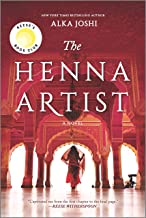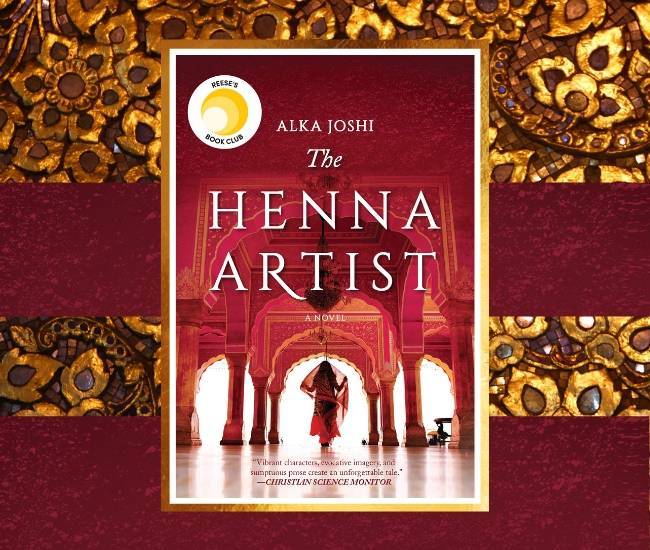The Henna Artist
“This vivid story is rich and complex!”
—Reese Witherspoon
Set in post-colonial India, The Henna Artist (MIRA), Alka Joshi’s debut novel, exposes a society hobbled by a rigid caste system, misogyny, superstition and age-old traditions. The smell of sandalwood, cooking fires, and tropical flowers wafts through it all, but the injustice and poverty are all but inescapable.
Lakshmi, our protagonist, is determined to live as an independent woman with her own means of support and her own house – one with marble floors, running water and double-thick walls to repel the heat. Already, construction has begun, and Lakshmi visits the empty house in the moonlight, dreaming of her future.
So close. She’s accomplished so much, establishing herself as an indispensable visitor to the wealthy wives of the upper class. She applies henna designs on their hands and feet to bring good luck and fertility; she’s a holistic healer, a comfort and a friend. She wears silver sandals, chiffon scarves and elegant saris of pale silk, a far cry from the rags she once wore as a girl growing up barefoot in dirt and poverty, married off at 15 because her parents had no money to feed her.
She’d escaped it all: the poverty, the abusive husband, the suffocating dead-end existence of ignorance and near starvation. But in the dusty heat and noise of the city, her past catches up with her — and then she makes a tactical error of her own, making her well-laid plans tenuous at best. Uncowed, she persists, accompanied by her loyal sidekick, a skinny brown-skinned boy of maybe eight or nine.
There’s so much to learn in The Henna Artist — from navigating the complicated caste system to the healing powers of the local plants and herbs. Lakshmi treads cautiously. There are so many rules to follow in her world, from downcast eyes as a sign of respect to the color of a woman’s head covering. The repercussions of breaking these rules are ruinous. Readers will cringe at the injustices the women suffer and find themselves fiercely hoping for a happy ending, the definition of which keeps changing.
Joshi invites her readers to immerse themselves in Indian culture. At the end of the book, she includes a glossary of Punjabi terms and an appendix that includes the story of henna, an explanation of the caste system and a couple of recipes. No need to read these in order to thoroughly enjoy The Henna Artist, but one may not want to leave Lakshmi’s universe right away.
Learn more about Alka Joshi on her BookTrib author page.





